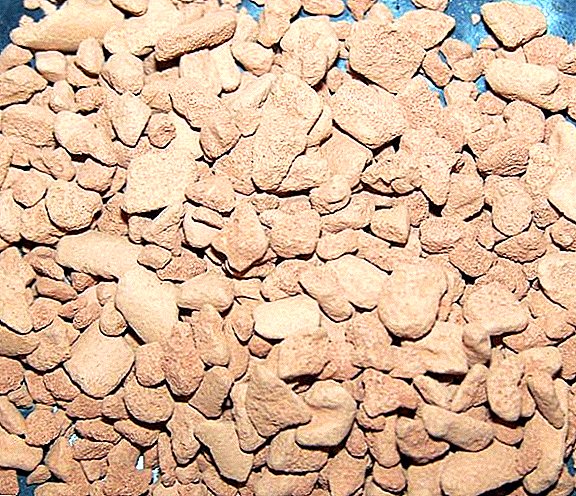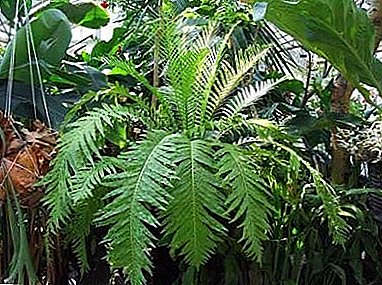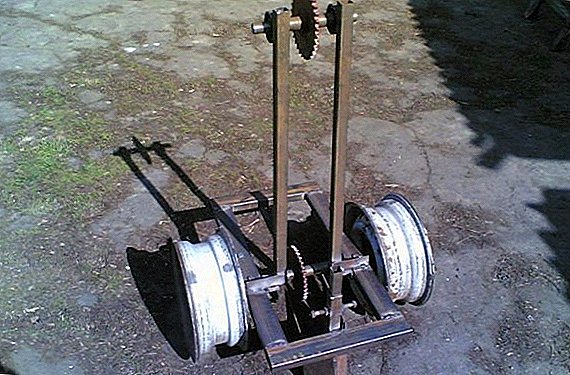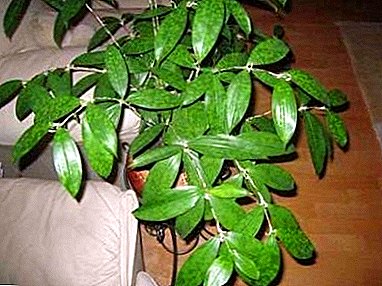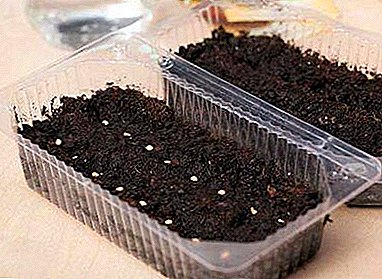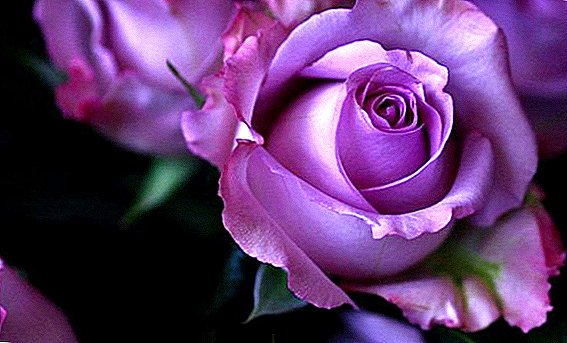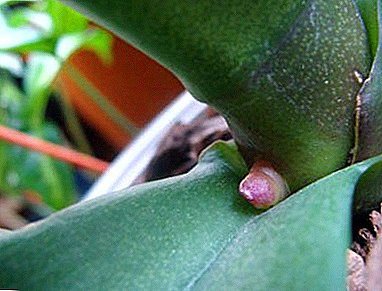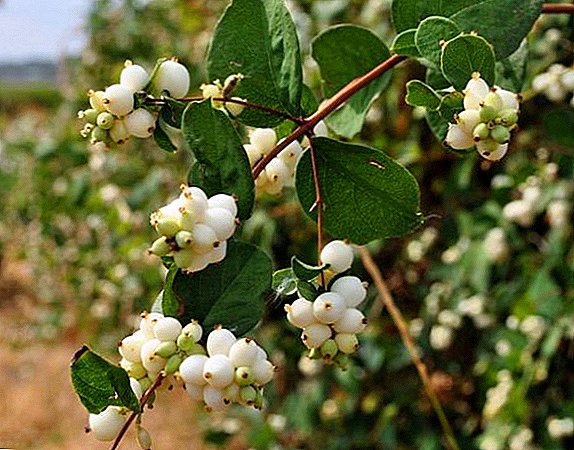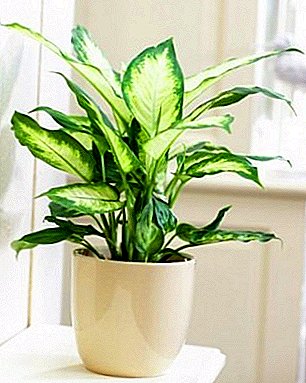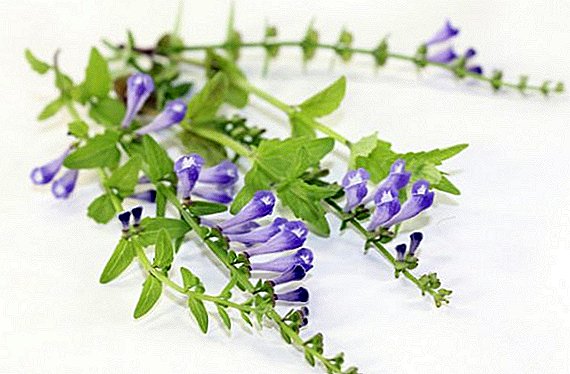 This article focuses on the plant, which is not recognized by traditional medicine, but it is still used in many popular recipes. This herb is mentioned in the Tibetan treatise "Zhud Shi", which is dedicated to healing, and also included in the 50 basic medicinal plants used in Chinese medicine. Let's consider what the Baikal skullcap is, what its composition is interesting for, and for what ailments it is used.
This article focuses on the plant, which is not recognized by traditional medicine, but it is still used in many popular recipes. This herb is mentioned in the Tibetan treatise "Zhud Shi", which is dedicated to healing, and also included in the 50 basic medicinal plants used in Chinese medicine. Let's consider what the Baikal skullcap is, what its composition is interesting for, and for what ailments it is used.
Botanical characteristic
The Baikal Skullcap is a herbaceous plant that belongs to the Shlemnik genus, the family of Lambs.
Important! In some sources, this plant belongs to the half-shrubs.This genus includes about 450 species, most of which are grass, and only a few are shrubs.
In the wild, a skullcap can be found in northeastern Asia. It grows in northern China, in the Amur region, near Lake Baikal, in Mongolia, Korea, and in the Primorsky Territory.
The plant itself grows up to 50 cm in height. It has an upright pubescent stem, small elongated leaves, as well as well-visible purple bells from afar. The inflorescences are very similar to the buds of the well-known cockerels. It is quite simple to confuse them, as not only violet is found in nature, but also blue, as well as red color.  The skullcap in the people has several names: shield, mother liquor, blue St. John's wort, as well as heart grass.
The skullcap in the people has several names: shield, mother liquor, blue St. John's wort, as well as heart grass.
If you want to decorate your bed with blue flowers, we advise you to look at clematis, lavender, delphinium, cornflowers, forget-me-nots, aconite, petunias, lobelia.
Flowering plant in July. After flowering, berries appear that burst at the slightest contact with the ground or any objects. As a result, the seeds fly apart a relatively large distance.
The plant does not belong to pharmacopoeial, therefore it is not used in traditional medicine, and it is rather difficult to purchase.
Chemical composition
Although skullcap is not recognized by official medicine, it is used to treat various diseases and ailments, adding to the composition of folk remedies. To understand how it is valuable, take a look at its composition.
The grass contains the following compounds: 
- coumarins;
- steroids;
- tannins;
- pyrocatechins;
- saponins;
- essential oil;
- resin;
- isoflavones;
- various acids;
- macro- and microelements (iron, potassium, copper, zinc, cobalt, iodine, selenium).
Steroids - plant substances that have high biological activity. Used in medicine to improve the body as a whole.
Important! Not to be confused with anabolic steroids that athletes use to gain weight. These substances belong to the same group of steroids, but act differently.Tannins - natural compounds that are used for tanning leather. They negatively affect microorganisms that provoke decay, resulting in tanned skin that does not decompose.
Pyrocatechins - a diatomic substance that is used in medicine for the production of adrenaline. Also used to create various dyes and developers in photography.  Saponins - complex organic compounds used to create a special liquid, which is placed in fire extinguishers. Also, saponins are used as stabilizers in the food industry (preparation of halva, beer, effervescent beverages). In medicine, used in the composition of expectorant, tonic, diuretic agents.
Saponins - complex organic compounds used to create a special liquid, which is placed in fire extinguishers. Also, saponins are used as stabilizers in the food industry (preparation of halva, beer, effervescent beverages). In medicine, used in the composition of expectorant, tonic, diuretic agents.
Important! Saponins are highly toxic in pure form.Isoflavones are natural substances found in large quantities in soybeans. They have anti-carcinogenic properties, as well as increase metabolism. Isoflavones are used to combat female climacteric syndrome.
Beneficial features
The pharmacological properties of the Baikal skullcap are based on the action of the compounds described above, the plant has the following beneficial effects on the body:
- possesses antitumor activity (acts on benign and malignant tumors);
- reduces the risk of blood clots;
- removes free radicals, as it is an antioxidant;
- has antiviral and anti-inflammatory effect;
- strengthens blood vessels;
- stabilizes pressure;
- improves cerebral circulation;
- speeds up metabolism;
- soothes the nervous system;
- eliminates intestinal spasms;
- accelerates wound healing;
- removes toxins from the body.
 As you can see, the skullcap has a huge range of useful properties, so we further describe the indications for the use of the plant. It will be about diseases that traditional medicine can cope with.
As you can see, the skullcap has a huge range of useful properties, so we further describe the indications for the use of the plant. It will be about diseases that traditional medicine can cope with.Indications for use
Medicinal herb is used to treat the following diseases and ailments:
- hypertension;
- arrhythmia;
- spasms of the digestive and excretory systems;
- insomnia;
- nervous disorders;
- high fever;
- worms infection;
- severe bleeding;
- toxicosis during pregnancy;
- constipation;
- bile stasis;
- hepatitis;
- gastroenteritis;
- diabetes;
- nephritis;
- rheumatism;
- whooping cough;
- bronchitis;
- pneumonia;
- tuberculosis;
- meningitis;
- angina;
- epilepsy;
- allergic rash.
 It is worth noting that for the treatment of certain diseases need ingredients that are difficult to get. Skullcap is widely used in Japanese and Chinese medicine, respectively, medicines contain ingredients that are not common with us. We have only indicated a complete list of diseases and ailments with which a medicinal plant can cope.
It is worth noting that for the treatment of certain diseases need ingredients that are difficult to get. Skullcap is widely used in Japanese and Chinese medicine, respectively, medicines contain ingredients that are not common with us. We have only indicated a complete list of diseases and ailments with which a medicinal plant can cope.Did you know? Skullcap also called such a plant as Aconite Jungar. The danger lies in the fact that aconite is one of the most poisonous plants in the world and grows in the same regions as the Baikal skullcap. Outwardly, it is quite simple to distinguish plants, but a dangerous aconite has inflorescences of the same color as the Baikal namesake.
Application of Baikal skullcap
Shlemnik though not recognized by traditional medicine, but the substances included in its composition, are actively used. Let's get acquainted in what other areas the plant has found its application.
In cosmetology
Baikal skullcap is used not only in traditional medicine, but also in cosmetology. Plant extract is added to various creams, shampoos, cosmetic oils, as well as to powder. It is used to protect the hair or skin from the external environment, to clean the sebaceous glands, as well as to improve the elasticity of the skin. Skin care products based on skullcap provide a rejuvenating effect, as well as improve the structure of the cover.  The extract of Baikal skullcap is often included in creams
The extract of Baikal skullcap is often included in creams
In veterinary medicine
It is possible to treat with the help of a grass not only people, but also animals. It is used for colds, as well as for the treatment of various inflammatory processes. It helps with myocarditis and chronic colitis.
Root extract is the main component of droplets for cats and dogs. These drops are considered a sedative.
Preparations based on buttercups, horsetail, peony, fennel and mountain ash are also often used in veterinary medicine.
Contraindications
The composition of the grass includes many different compounds that can have not only a positive, but also a negative effect on the body. That is why it is important to consider contraindications, as well as cautions.
Let's start with the fact that giving medicines on the basis of the grass can not be children under 12 years old, otherwise you will encounter a serious allergic reaction. It is also recommended to refuse to receive pregnant and lactating women, especially alcoholic tinctures. This is due to the fact that a woman or a child may experience a negative reaction, and since the relevant studies have not been conducted, it is best not to risk it once again.  Many people are allergic to skullcap, so they can not use the product in any way, even externally.
Many people are allergic to skullcap, so they can not use the product in any way, even externally.
The herb is forbidden to use for people who have serious liver or kidney disease. You should also limit the intake if you are taking other traditional medicines.
Important! We recommend to consult a doctor before using medicinal herbs in order to avoid a negative reaction.
Recipes
We offer simple recipes to help you cope with illnesses and diseases without the use of harmful synthetic drugs.
Infusion
This infusion is used as a hemostatic, astringent and sedative.
Take 2 tsp. crushed leaves and flowers of the plant, pour 400 ml of boiling water. Insist 2 hours, then filter and cool.
Should take 1 tbsp. l before a meal or in between meals. The number of receptions per day - no more than five. 
Infusion on the roots
Infusion on the skullcap is used for the following problems:
- nervous disorders;
- insomnia;
- increased blood pressure;
- gastrointestinal tract diseases;
- infectious diseases of the excretory tract.
Take 2 tbsp. l chopped roots, then pour 0.5 liters of boiling water. Insist at least 4 hours, filter and cool. It is best to insist in a thermos so that the liquid does not cool quickly.
Take in warm form of 100 ml before meals. To improve the taste, you can add honey or sugar.
Did you know? British scientists from the John Innes Center conducted research according to which the substances in the composition actually kill cancer cells, but traditional medicine ignored these results.
 Baikal Skullcap Root
Baikal Skullcap RootAlcohol tincture on the roots
Used for the following problems:
- cold;
- flu;
- insomnia;
- diseases of the stomach and intestines of inflammatory nature;
- PMS;
- menopause;
- cardiovascular diseases.
For tincture you need 1-2 vials of 70% alcohol. Using the 96% option is not recommended.
50 g of crushed roots pour 200 ml of alcohol. Insist 2 weeks in a dark cool place to prevent light from entering the mixture. After that, filter, pour into a convenient bottle and take 20-30 drops 3 times a day. Drops must be diluted in water. Reception course - 1 month.
In addition to the above problems, tincture is also used externally for rubbing the joints.
Learn how to properly prepare and apply the tincture of chestnut, propolis, lilac, strawberry.
Powder
 Dry extract based on the roots can be purchased at the pharmacy. It is used for the following problems:
Dry extract based on the roots can be purchased at the pharmacy. It is used for the following problems:
- nervousness;
- insomnia;
- high blood pressure.
The powder should be consumed 3 times a day, drinking plenty of water. At one time, use a quarter or half a gram of dry extract.
Important! On the basis of the powder, it is also possible to prepare an ointment by mixing the raw materials with baby cream or wound healing ointments. Used only externally.Remember that each organism reacts differently to such traditional medicines, so if the condition worsens, immediately consult a doctor. And it is better to hold a consultation with a specialist before taking any funds based on this plant.
Feedback from network users



